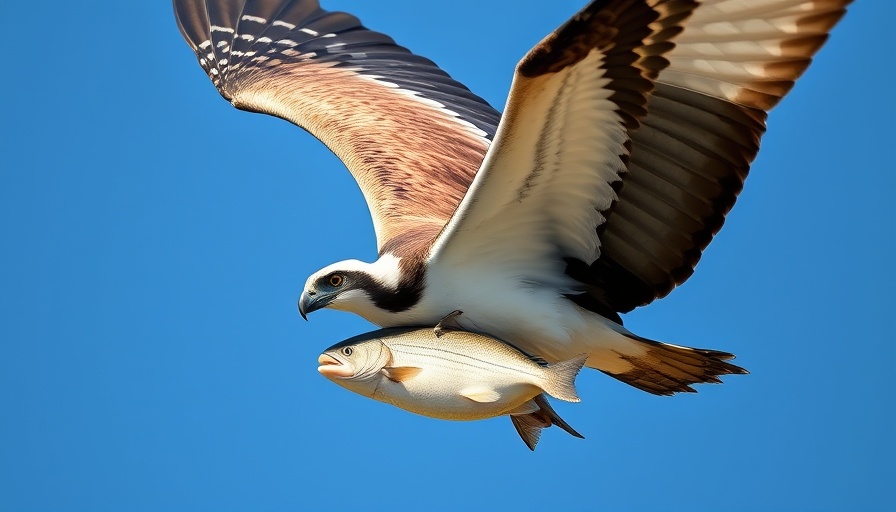
The Resurgence and the New Threats Facing Ospreys
Ospreys once teetered on the edge of extinction, but conservation efforts helped them bounce back to vibrant populations across North America. This remarkable recovery is tethered to the health of their environment and the availability of key food sources. Sadly, it appears that these majestic birds of prey are again facing formidable challenges, especially concerning the impact of environmental changes and overfishing.
Understanding the Link Between Osprey Health and Overfishing
While ospreys are known to primarily feed on fish, their decline has drawn attention to broader ecological issues. Recent reports indicate that chicks are dying in nests, and some ornithologists are looking closely at the relationship between declining fish populations and the survival of juvenile ospreys. Overfishing has led to reduced food sources, which directly affects chicks' growth and survival rates.
Community Action and Awareness: A Call for Change
The situation prompts a sense of urgency among communities and conservationists. Efforts are underway to raise awareness about sustainable fishing practices that not only protect fish populations but also ensure a healthy environment for ospreys. Educating the public about the delicate balance of local ecosystems is vital as these birds symbolize the broader health of our natural world.
Conclusion: The Future of Ospreys and Their Habitat
The story of the osprey is one of resilience, but it also serves as a reminder of the dire impacts human activities can have on wildlife. Continued advocacy for sustainable fisheries and conservation efforts is crucial to safeguard these birds and their habitats from further decline. Engaging in conservation initiatives can foster a healthier ecosystem for generations to come.
 Add Row
Add Row  Add
Add 




Write A Comment